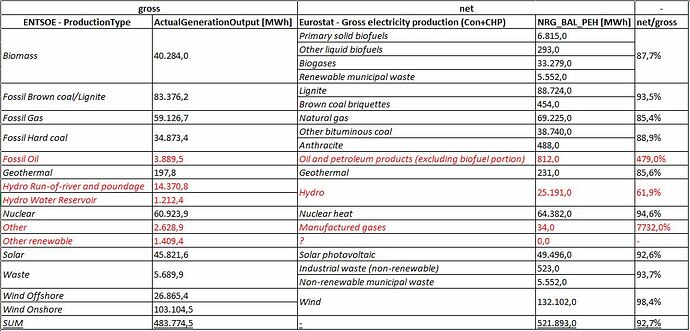Hi!
Does anyone know if there is a best practice on how to match the categories used by ENTSO-E for different production types / energy carriers (see here, examples are Biomass, Fossil Gas) and those used in the Eurostat SIEC classification scheme (see here, examples are Bioenergy, Natural Gas)?
Two studies that touch on this topic that I am aware of are by Wörner et al., 2019 (in German) and Unnewehr et al., 2022. However, Wörner matches ENTSO-E with AGEB/Destatis data, not with Eurostat data (Bild 1/section 3.2). Admitteldy, the categories are quite similar for Eurostat and AGE. Unnewehr describes the matching process in section 3.4, but not in detail for every single category.
The ENTSO-E categories I am still most uncertain about how to match them with Eurostat data are Fossil Gas, Fossil Oil, Fossil Coal-derived gas, Other, Other renewable and Waste. Should I match Refinery Gas (Eurostat) with Fossil Oil (ENTSO-E), or another category? Renewable municipal waste could match with Other renewable, but also with Waste. Finally, how to best deal with the fact that natural gas powered CHP plants appear to be listed in the category Other, not Fossil Gas as one might expect (according to Wörner, Bild 1/section 3.2 - not sure if this is still the case)?
With the studies cited above, I could probably make a best guess for matching the two classification schemes. But perhaps there are official or semi-official studies / guidelines on how to do it “right” that I missed so far. Any help is greatly appreciated!
Best,
Malte
